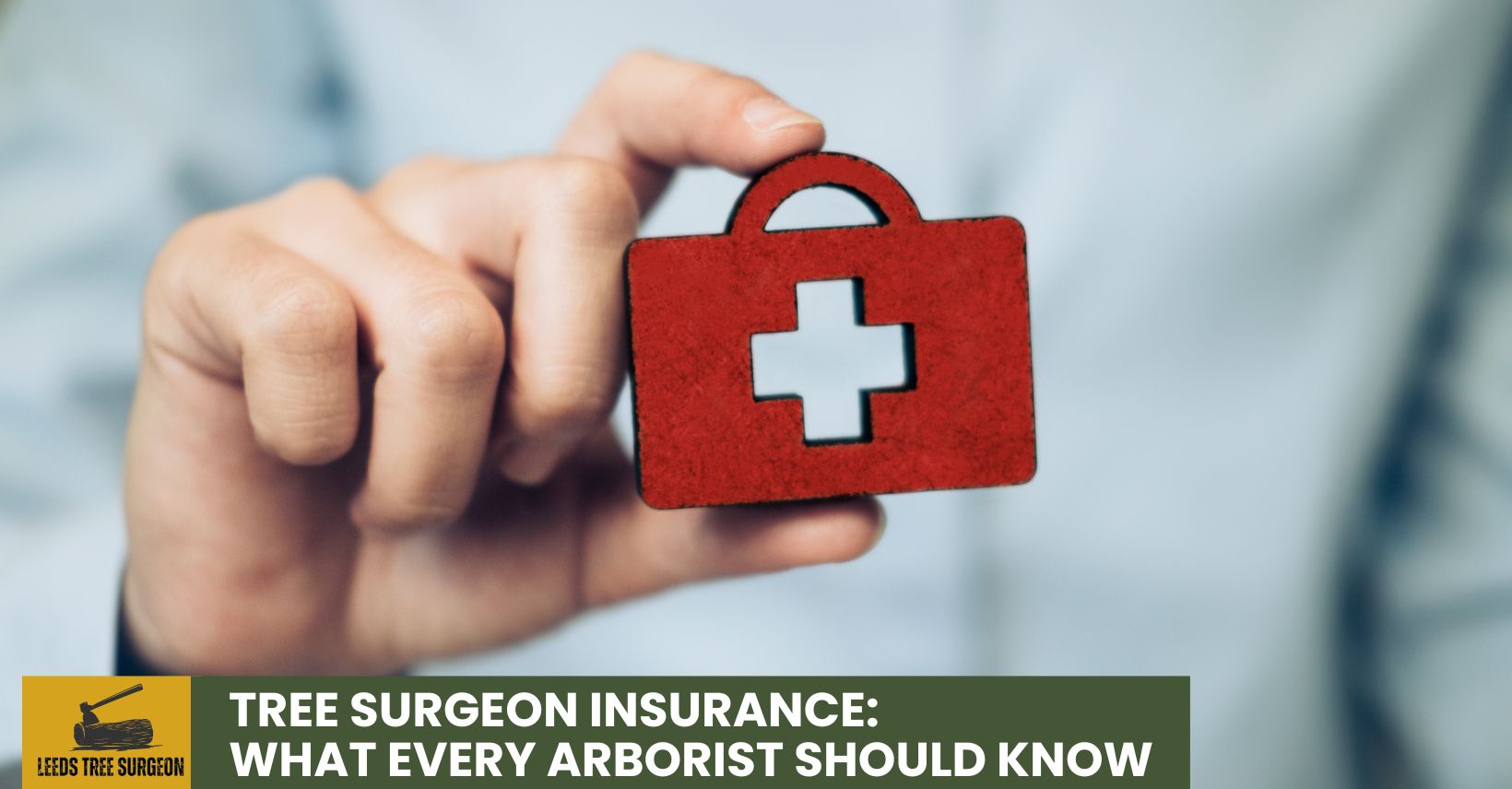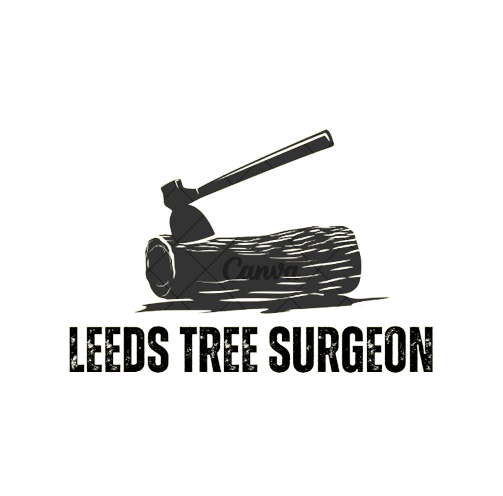If you’re an arborist or tree surgeon, it’s important to understand the right insurance coverage to protect your business.
In this comprehensive guide, we will explore tree surgeon insurance, why it’s essential for arborists, the types of insurance they need, and how to choose the right insurance provider.
We will also discuss the factors that affect the insurance cost and what should be included in a tree surgeon’s insurance policy.
Stick around to learn everything you need to know to protect your business adequately.
What Is Tree Surgeon Insurance?
Tree surgeon insurance is a specialised form designed to cover the special risks of tree surgery and arboricultural services.
Liability insurance is essential for tree surgeons, covering damages or injuries they might cause while working. Given the high-risk nature of their job, involving heights and heavy machinery, public liability cover shields them from potential claims by those harmed during operations. This specialized insurance addresses the individual challenges tree surgeons face, ensuring they can work confidently fully backed against unforeseen liabilities. Such comprehensive protection underscores the broader need for arborists to have robust insurance coverage, leading directly to exploring why arborists need insurance in various aspects of their professional activities.
Why Do Arborists Need Insurance?
Arboriculturists need insurance to protect themselves from potential claims arising from their work’s inherent risks and injuries and to meet legal requirements.
Arboriculturists encounter daily risks like injuries from falls and equipment accidents, alongside property damage from activities such as falling branches. These incidents pose serious health risks and can lead to substantial financial liabilities. Proper insurance coverage is important to protect against these hazards and fulfil industry regulations, ensuring that arboriculturists operate within legal boundaries. This necessity underscores the importance of understanding the various types of insurance available, which we will explore in the following section on what types of insurance arborists need.
What Types Of Insurance Do Arborists Need?
Arborists require several types of insurance to cover their operations, including comprehensive insurance.
- General liability insurance
- Employers’ liability insurance
- Commercial motor insurance
- Property insurance
- Professional indemnity insurance
- Umbrella Insurance
This variety of insurance options helps protect them from a wide range of risks.
General Liability Insurance
Public liability insurance is essential for arborists as it covers third-party claims for bodily injury or property damage that may occur during tree surgery operations.
This type of insurance protects arborists in accidents such as a branch falling on a neighbouring property and causing damage or a passerby being injured by equipment during tree removal. The public liability policy can cover repair or replacement costs if a client’s property is damaged during tree trimming. It also offers protection in situations where legal expenses need to be covered, whether for settlement negotiations or courtroom defence.
Workers’ Compensation Insurance
Employers’ liability insurance is essential for arborists to cover medical expenses and lost earnings for employees who suffer work-related injuries or illnesses.
Having this type of insurance in place not only ensures that employees are taken care of in times of need but it also protects the employer from potential legal actions and financial liabilities. Employers’ liability insurance is an important safety net in the tree care industry, where workers are exposed to various risks daily, such as falls, cuts, and strains. It can provide peace of mind to both the employees, knowing they will receive necessary financial support, and to the employer, avoiding potential financial ruin from hefty medical and legal expenses. By offering this insurance, employers can also attract and retain quality workers by showing commitment to their well-being.
Commercial Auto Insurance
Commercial motor insurance is necessary for arborists who use vehicles for their business. It provides cover in the event of an accident or damage to the vehicle.
Appropriate commercial motor insurance can safeguard an arborist’s business from financial risks associated with vehicle-related incidents. This type of insurance typically offers cover for physical damage to the vehicle, liability protection in case of injuries caused to others, and cover for medical expenses. It can also protect in theft, vandalism, or natural disasters. By investing in comprehensive motor insurance, arborists can ensure that their operations continue smoothly even in the face of unexpected mishaps on the road.
Property Insurance
Property insurance protects arborists’ physical assets, including equipment and office space, from damage or loss due to fire, theft, or vandalism.
Property insurance can be a lifesaver for arborists, as it covers the repair or replacement of expensive equipment like chainsaws, chippers, and trucks that are essential for business operations.
In addition, if an arborist’s office space is damaged by fire or vandalism, insurance can help cover the costs of restoring it to its original state.
This protection also extends to valuable trees on a client’s property that an arborist may be working on, ensuring that any damage or loss incurred during the job is adequately compensated.
Property insurance provides a safety net for arborists, allowing them to focus on their work without worrying about the financial repercussions of unforeseen incidents.
Professional Indemnity Insurance
Professional indemnity insurance, or professional liability insurance, covers tree surgeons against claims of negligence or mistakes made while providing their services.
This type of insurance is essential for tree surgeons as it protects them from the financial consequences of lawsuits resulting from errors or omissions in their work. For example, if a tree surgeon inadvertently damages a client’s property while pruning trees, their professional indemnity insurance would cover the resulting legal expenses and potential damages awarded to the client. Similarly, in a situation where a tree recommended for removal by a tree surgeon falls and causes injury to a bystander, this insurance would help cover the costs of defending against a legal claim and any settlements reached.
Umbrella Insurance
Umbrella insurance provides arborists with additional cover beyond the limits of their existing policies, offering an extra layer of protection against substantial claims.
By having umbrella insurance, arborists can rest assured that they have a safety net in place to cover any unforeseen events that may exceed the limits of their primary insurance policies. This additional cover can prove to be invaluable, especially in situations where a major liability claim arises.
Umbrella insurance enhances existing policies by covering gaps left by other insurance types, ensuring arborists are shielded against substantial financial liabilities. This extra layer of protection helps prevent major out-of-pocket costs from claims that exceed primary insurance limits. Understanding the cost of this important safety net leads us naturally to explore the expenses associated with tree surgeon insurance.
How Much Does Tree Surgeon Insurance Cost?
The cost of tree surgeon insurance varies depending on several factors, including:
- the size of the business,
- the number of employees,
- the types of cover required, and
- the exact risks associated with tree surgery,
with premiums to match the individual needs of each arborist’s policy.
Factors That Affect the Cost of Tree Surgeon Insurance
Several factors affect the cost of tree surgeon insurance, including the level of risk associated with the job, the turnover of the business, and the exact types of coverage required.
Business size plays an important role in determining insurance premiums for tree surgeons. Larger tree surgery companies may face higher premiums due to the increased scale of operations and potential risks involved.
The risk level associated with tree surgeon work, such as working at heights or dealing with heavy machinery, can also influence insurance costs as insurers assess the likelihood of claims.
The choice of insurance policies, such as general liability, workers’ compensation, and equipment coverage, can impact the overall cost of insuring a tree surgery business.
Average Cost of Tree Surgeon Insurance
On average, tree surgeons can expect to pay varying premiums for their insurance coverage, depending on the extent and types of policies they choose to carry.
In general, the cost of insurance for tree surgeons ranges from £1,000 to £5,000 annually. This cost can fluctuate based on factors such as the size of the business, the number of employees, the equipment used, and the coverage limits desired.
For instance, a small tree surgery business with one employee might incur an annual insurance cost of around £1,000 for basic coverage. In contrast, a larger operation with multiple employees may face costs exceeding £5,000 for more comprehensive insurance. These variations underscore the importance of selecting the right insurance provider, a decision that can significantly impact both the protection offered and the business’s financial well-being. This leads us seamlessly into the discussion of how to choose the right insurance provider.
How To Choose The Right Insurance Provider?
Choosing the right insurance provider is important for tree surgeons to ensure optimal coverage to their needs. Thorough research, comparison of quotes, and professional recommendations are key steps in this process. These considerations form the foundation for the following detailed guide on selecting the most suitable insurance provider for tree surgery businesses.
Research Different Insurance Providers
Researching different insurance providers is the first step in finding the right cover, allowing tree surgeons to compare the various insurance options and the reputation of each insurer.
Thorough research is important as it helps understand each insurer’s cover details, policy exclusions, and claim procedures. Tree surgeons can gauge the insurance companies’ reliability and satisfaction levels by checking customer reviews and ratings.
Exploring insurers’ financial stability and industry standing ensures that tree surgeons entrust their cover to a reputable and stable company. It’s essential to look beyond the cost of premiums and consider the overall value and service quality provided by insurance providers.
Check Their Coverage Options
When choosing an insurance provider, it is essential to check the cover options they offer to ensure the policy meets all the needs of a tree surgeon’s business.
One important step in evaluating insurance providers’ cover options is carefully reviewing the policy details. This involves examining what risks and liabilities are covered under the policy, including property damage, bodily injury, and legal expenses.
It’s important to assess the cover limits to ensure they are sufficient to protect the assets and operations of the tree surgeon’s business. These limits can vary based on the provider and the exact policy, so a thorough comparison is necessary to find the most suitable option.
Read Reviews and Ask for References
Reading reviews and asking for references from other clients can provide valuable insights into an insurance provider’s reliability and service quality.
By diving into reviews, potential clients can gain firsthand accounts of the experience, allowing them to gauge customer satisfaction and the company’s reliability. References from existing clients can offer a personal touch, providing authentic feedback on the insurer’s claim-handling process, responsiveness, and overall customer service. This accumulation of information can help individuals make a well-informed decision when selecting an insurance provider, ensuring they choose a company that meets their needs and expectations.
Compare Quotes
Comparing quotes from different insurance providers is important in selecting the right cover. This ensures tree surgeons find the best insurance premium and policy that fits their budget and needs.
This approach enables tree surgeons to weigh various insurance options, tailoring their choices to their needs. By soliciting multiple quotes, they can evaluate differences in cost, coverage, deductibles, and additional benefits, eventually selecting the most economical policy without sacrificing essential protections. This cost-effective strategy saves money and leads seamlessly into the next consideration: identifying what should be included in a tree surgeon insurance policy to ensure comprehensive coverage.
What Should Be Included In A Tree Surgeon Insurance Policy?
A comprehensive tree surgeon insurance policy should include terms and conditions covering public liability, professional indemnity, employer’s liability, property insurance, and any necessary endorsements for the arboricultural services provided.
Public liability insurance protects against claims from third-party injuries or property damage, while professional indemnity insurance covers errors in professional services. Employers’ liability insurance is essential for compensating employees for work-related injuries. Property insurance safeguards the equipment and tools vital for tree care operations. Exact endorsements, like coverage for tree removal incidents, are important for comprehensive protection. These insurance types form the foundation of robust financial security for arborists, seamlessly leading into our closing remarks on the essentials of tree surgeon insurance.
Closing Remarks: The Essentials of Tree Surgeon Insurance
Having the right insurance is essential for tree surgeons to protect their businesses against the myriad of risks they face daily. A well-chosen insurance policy that contains public liability, professional indemnity, and employers’ liability insurance, among others, ensures comprehensive coverage.
Tree surgeons operate in high-risk industries where accidents and unforeseen events can occur without warning. A strong insurance policy acts as a safety net, shielding them from potential financial ruin due to legal claims, property damage, or injuries.
Comprehensive insurance coverage protects the tree surgeon’s business assets and provides peace of mind. Understanding the business’s exact needs and tailoring the insurance policy accordingly is crucial. Researching various insurers, comparing quotes, and seeking professional advice can help them choose the best coverage that suits their requirements. For more detailed information, find more here.





